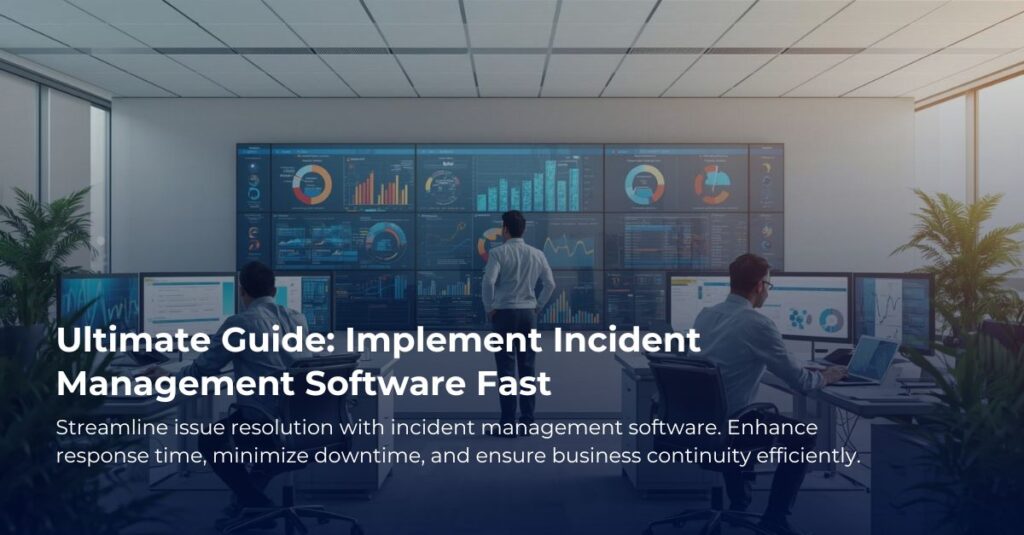Understanding Incident Management Software: Features and How to Implement It
Imagine you’re running a busy restaurant. One day, a power outage causes your kitchen equipment to fail right before the dinner rush. Panic sets in, but wait—what if you had a system in place to handle this incident smoothly? You’d know exactly who to alert, how to communicate with your staff, and what backup plans to activate. This is where incident management software comes into play, and it’s not just for tech companies; it can benefit businesses of all kinds.
What is Incident Management Software?
At its core, incident management software is a tool that helps businesses track and resolve issues quickly. It streamlines the entire process—from reporting a problem to finding a solution. Think of it as your company’s reliable helper that ensures everyone is on the same page during a crisis.
Key Features to Look For
Now, let’s dive into some of the essential features you should consider when looking for incident management software:
- Incident Reporting: A simple way for staff to report issues, including a user-friendly interface that makes it easy to describe the problem.
- Tracking and Prioritization: This feature allows you to categorize incidents by urgency, helping you address the most critical issues first.
- Alerts and Notifications: Automated alerts can be sent to the relevant team members when an incident occurs or updates are made. No more missed emails!
- Collaboration Tools: Features that enable team members to communicate and share updates in real-time, fostering effective teamwork during stressful times.
- Reporting and Analysis: Detailed reports help you analyze incidents over time, so you can identify patterns and improve processes in the future.
Implementation: How to Get Started
Implementing incident management software can seem daunting, but breaking it down into manageable steps makes it easier. Here’s how you can get started:
- Define Your Needs: Consider the specific challenges your business faces. What types of incidents do you encounter? This will help you choose the right software features.
- Research and Choose Software: Look for software providers that offer what you need. Don’t hesitate to request demos to see if their solution fits your company culture.
- Set Up the System: Once you choose a platform, work with your team to set it up properly. Customize workflows to reflect how your business works best.
- Training: Provide training for your staff. Everyone should feel comfortable using the software so that it becomes a seamless part of your processes.
- Test and Optimize: Run initial tests to ensure everything functions as expected. Gather feedback, and make adjustments to improve efficiency.
Final Thoughts
Incident management software might not be the first thing that comes to mind when you think about running a successful business, but it can significantly enhance your ability to respond to unexpected challenges. By choosing the right features and implementing the software thoughtfully, you can create a more resilient organization.
So next time an incident arises, instead of feeling overwhelmed, you’ll have confidence in your team and your tools. Why not explore how this software can be a smooth ride for you and your staff?







